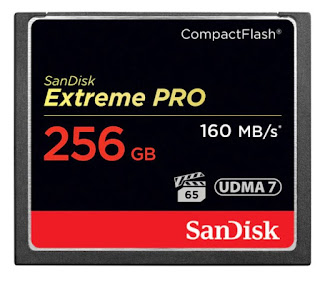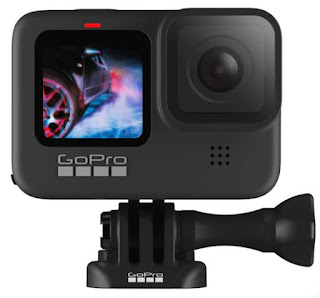How to Choose The Best Tripod and Support Accessories?
Every photographer needs the best tripods since they are helpful, versatile pieces of gear. Regardless of your photography type, most photographers would advise getting one. Our reliable three-legged companions, often known as lifesavers and anchors, are always ready and willing to lend even the shakiest camera operators some rock-solid support.
Your camera must use a slower shutter speed in low light conditions to collect enough light for proper exposure. As a result, results will be blurry if the camera moves while shooting the photo. This issue is resolved with the best tripod since it keeps the camera completely stationary.
Stability is the main benefit of tripod use for photographers. Stabilizing the camera is advantageous for various techniques, including extended exposure, low-light, and HDR photography. There are several different sizes of tripods. Usually, a smaller, lighter DSLR with a kit lens can be supported by a small or medium-sized tripod.
Larger tripods support larger DSLR cameras and longer lenses. Tripods are frequently constructed from heavier, less expensive materials; therefore, if you require a lightweight tripod, go for one composed of carbon fiber. There are a few smaller substitutes if a standard-sized tripod seems excessive for your photography type.
- Due to its small size and lightweight, the Benro A2573F Aluminum Single Tube Tripod with S4Pro Fluid Video Head can easily carry up to 8.8 lb loads. The head may also be easily detached from the tripod and put directly on sliders, jibs, and other support equipment thanks to its 60mm flat base and 3/8″-16 threaded hole. Overall, you get a flexible system with neatly folded single-tube legs. A tripod setup can take some time. You are encouraged to slow down, which gives you more time to observe your surroundings and adjust the camera. Your images will look better since the composition may be improved due to this.

- Check out the GorillaPod 5K Flexible Mini-Tripod with Ball Head Kit from Joby pairs. A flexible and adaptable support system is created by combining the GorillaPod 5K stand and the BallHead 5K. You can easily attach and detach your equipment while accurately controlling its direction and angle. This kit is perfect for professional DSLRs, mirrorless cameras, LED lighting, and other equipment weighing up to 11 lb. It would be best to acquire the proper exposure when shooting in low light conditions, such as during the blue hour or at night.

- The Jumbo Stand from Kupo rises to a maximum height of 20′ and can handle up to 154 lb. It was made to be solid and safe for handling extra-heavy equipment. The stand’s whole structure is made of chrome-plated steel, including the bracing, and it replaces pulleys and cables with a direct drive gear system and auto-locking. It incorporates an extra-large T-handle on each riser, an auto-locking function, braking wheels, a direct drive gear mechanism, and dual handles on the bottom spider to enable safe repositioning.

- Peak Design’s aluminum travel tripod with 3.4 lb support is small and portable. Its folded length of 15.5″ takes up less space when closed, making it perfect for travel. The tripod’s 5-section legs can be quickly assembled or disassembled by simultaneously releasing all aluminum leg locking cams on the tripod. It has a single adjustable ring that enables omnidirectional movement and secures into place with the locking ring that is situated above the adjustment ring. The ball head contributes to the tripod’s revolutionary compact form by not having any knobs or levers projecting from it.

- Take a look at Vidpro’s MP-66 VentureMaxx Professional 70″ Monopod. It has a durable black anodized finish support that weighs 1.5 pounds and is resistant to scratches and scuffs. The monopod also incorporates a height-adjustable Air-Lock System that allows its five pieces to be extended to a maximum height of 70″ and collapsed to 20″ by pressing the two buttons underneath the base for the head mounting. You can use the tripod base’s fold-out feet with an integrated swiveling, locking ball joint to tilt, twist, and follow a subject’s movement effortlessly.

You can move the camera on the left-to-right axis while fixed on the up-down access with a Panhead tripod. A panning tripod is the best method to guarantee consistent and satisfying results, even though it is possible to achieve this handheld with practice and luck.
The tripod head lets the camera rotate and move up and down and is located between the chassis and the camera. The three-way pan tilt and ball heads are the two most common types.
The photographer’s choice of tripod will depend on how much weight the camera will carry. The priciest tripods are made of composite materials, such as carbon fiber, which is stronger and lighter than steel or aluminum.
As a result, the tripod will lessen the camera shake and contribute to sharper images. Additionally, they help with precise image framing, exposure bracketing, and other types of image stacking.
The weight of the entire composition falls on your shoulders while handholding a camera. When the camera is mounted to a tripod, the design framing is chosen for you.
After making this crucial choice, you can concentrate on adjusting the angle and location more carefully. The tripod will be more likely to move if the legs or center column are overextended because of the increased height and weight of the camera on top. The tripod’s center of gravity will be more stable if the uppermost point is kept as near the ground as feasible.
You can find the best tripods, monopods, and support accessories from Vidpro, Manfrotto, Benro, Delkin, Peak Design, Promaster, Westcott, and many more at the AVC camera store in Miami, Florida.




Comments
Post a Comment